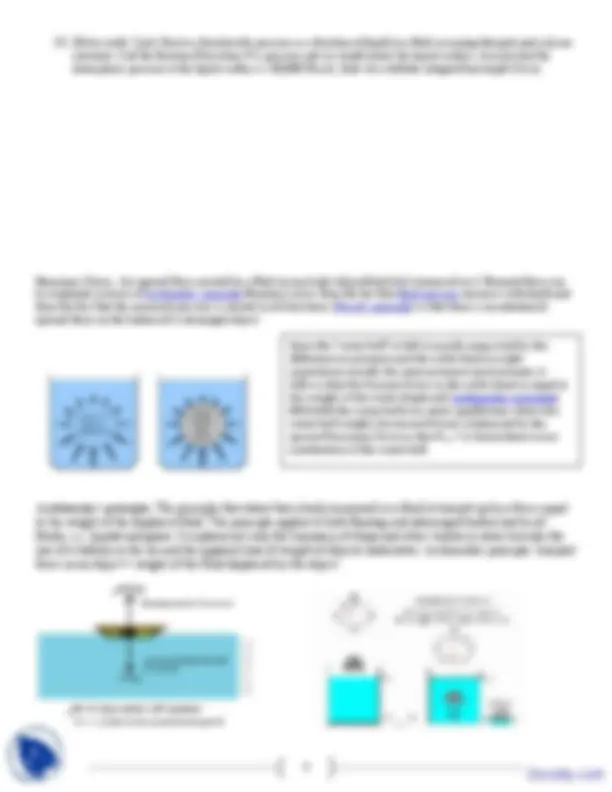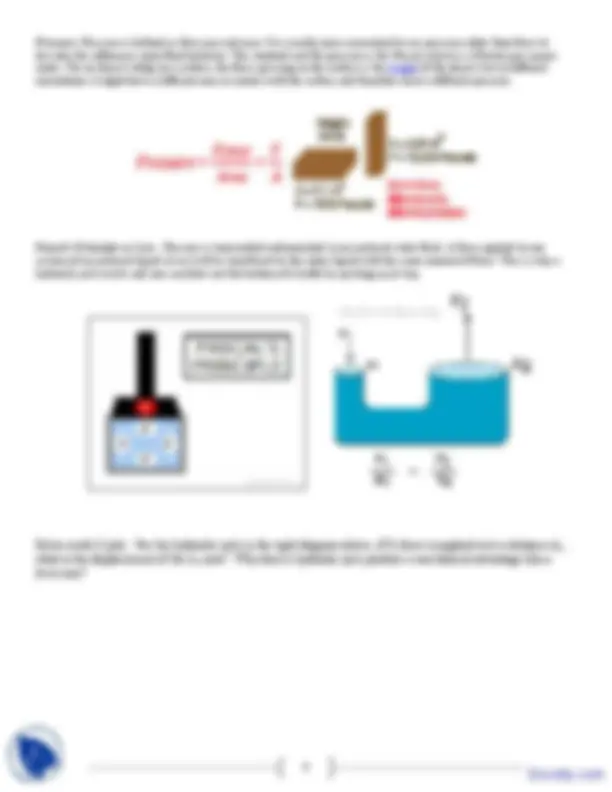




Study with the several resources on Docsity

Earn points by helping other students or get them with a premium plan


Prepare for your exams
Study with the several resources on Docsity

Earn points to download
Earn points by helping other students or get them with a premium plan
Community
Ask the community for help and clear up your study doubts
Discover the best universities in your country according to Docsity users
Free resources
Download our free guides on studying techniques, anxiety management strategies, and thesis advice from Docsity tutors
During the course work of we done some practical in the lab, The key points are:Geophysics, Density, Height, Block, Width, Length, Calculated, Accurate, Required, Condition
Typology: Exercises
1 / 4

This page cannot be seen from the preview
Don't miss anything!



Introduction to Geophysics: Buoyancy Lab Name_____________________________
Assume a block of height h (m) and density ρb (kg/m^3 ) is placed into a fluid of density ρf. Please use MKS units throughout this lab. Note that we are doing a 1-dimensional problem in a 3-dimensional world which means that the length and width of the block can be assume to be unity (1) and thus this dimensions are irrelevant to our calculation. Correspondinly, the forces calculated will be force per unit area (m^2 ) which is pressure (1 Newton/m^2 == 1 Pascal).
Pressure. Pressure is defined as force per unit area. It is usually more convenient to use pressure rather than force to describe the influences upon fluid behavior. The standard unit for pressure is the Pascal, which is a Newton per square meter. For an object sitting on a surface, the force pressing on the surface is the weight of the object, but in different orientations it might have a different area in contact with the surface and therefore exert a different pressure.
Pascal's Principle or Law. Pressure is transmitted undiminished in an enclosed static fluid. A force applied to one section of an enclosed liquid at rest will be transferred to the entire liquid with the same amount of force. This is why a hydraulic jack works and you can blow out the bottom of a bottle by pushing on its top.